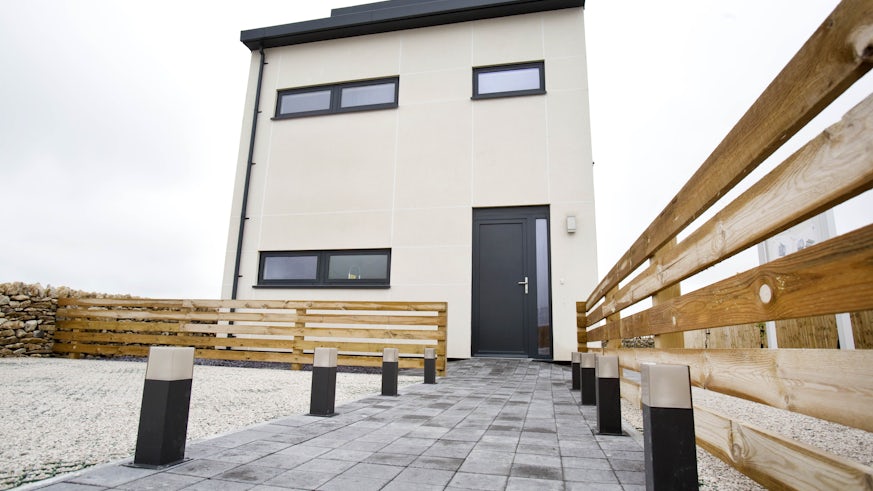How do we make housing more sustainable?
16 November 2017

Housing lenders and construction policymakers will come together at Cardiff University next week to look at how carbon neutral housing can become an industry standard.
‘Energy Use in the Built Environment’, organised by the University’s Innovation Network, will explore the funding, regulations and practicalities of building carbon neutral and positive homes. It will examine whether innovations like the University’s SOLCER House – the UK’s first carbon-positive house – can be replicated at an industrial scale.
Cardiff University's Professor Phil Jones and his team from the Welsh School of Architecture developed SOLCER House, the first low-cost energy-positive house. It is capable of exporting more energy to the national electricity grid than it uses.
Professor Jones said: “Our work with SOLCER House shows that high standards of energy performance can be achieved in practice and at an affordable cost...”
"The challenge is now one of scale: is the success of SOLCER replicable across industry? Working directly with businesses and policymakers is the only way we can find out."
Last month the UN announced that atmospheric concentrations of CO2 increased at a record-breaking speed in 2016 to the highest level in 800,000 years. In the UK, housing energy use accounts for 27 per cent of carbon emissions and poses a significant challenge to the 2008 Climate Change Act. The Act requires an 80 per cent reduction in emissions by 2050.
Coupled with environmental challenges are housing supply issues. In 2015 the Federation of Master Builders estimated that Wales would need to build 14,000 homes a year by the end of the decade. Welsh Government has since set a target of 20,000.
Cabinet Secretary for Energy, Planning and Rural Affairs Lesley Griffiths said: “This is a dual challenge facing society: a changing climate and a housing shortage. We need to make sure that the regulatory framework for construction keeps pace with the changing climate in a way that recognises innovation in design thinking, product and material development...”

"We need more homes and we need them to reduce their carbon emissions."
The Principality Building Society recently agreed to provide £50m in loans to housing associations in Wales, which will be used to build 13,000 affordable homes by 2021.
Julie Ann Haines, Customer Director at Principality Building Society, said: “Funding and building more sustainable homes is imperative for our future. Tackling the housing crisis must not be done without the necessary safeguards for our environment.”
Professor Jones also points to SOLCER House’s potential to lift households out of energy poverty, adding: “The cost of living is increasing while real wages remain stagnant, making expenditure a difficult decision for households. Reducing energy bills means more funds to spend on other necessities, helping families out of energy poverty.”
The University’s Innovation Network has promoted business-university interactions for over two decades.
Share this story
Providing opportunities for business-to-business and business-to-university links.



